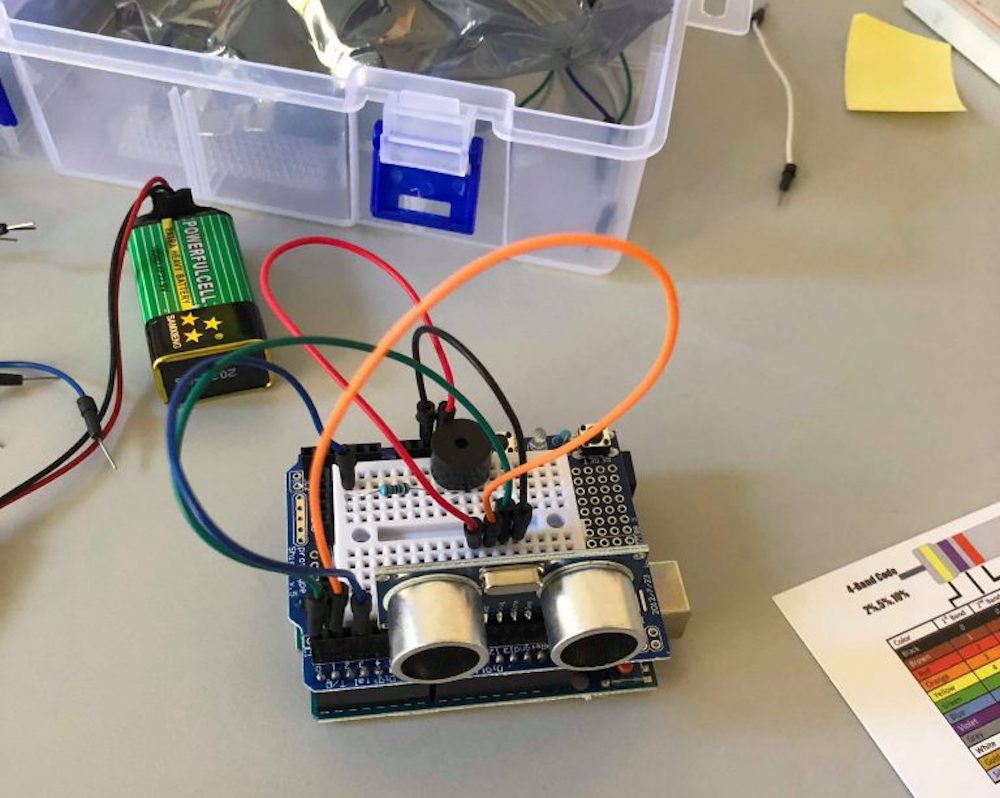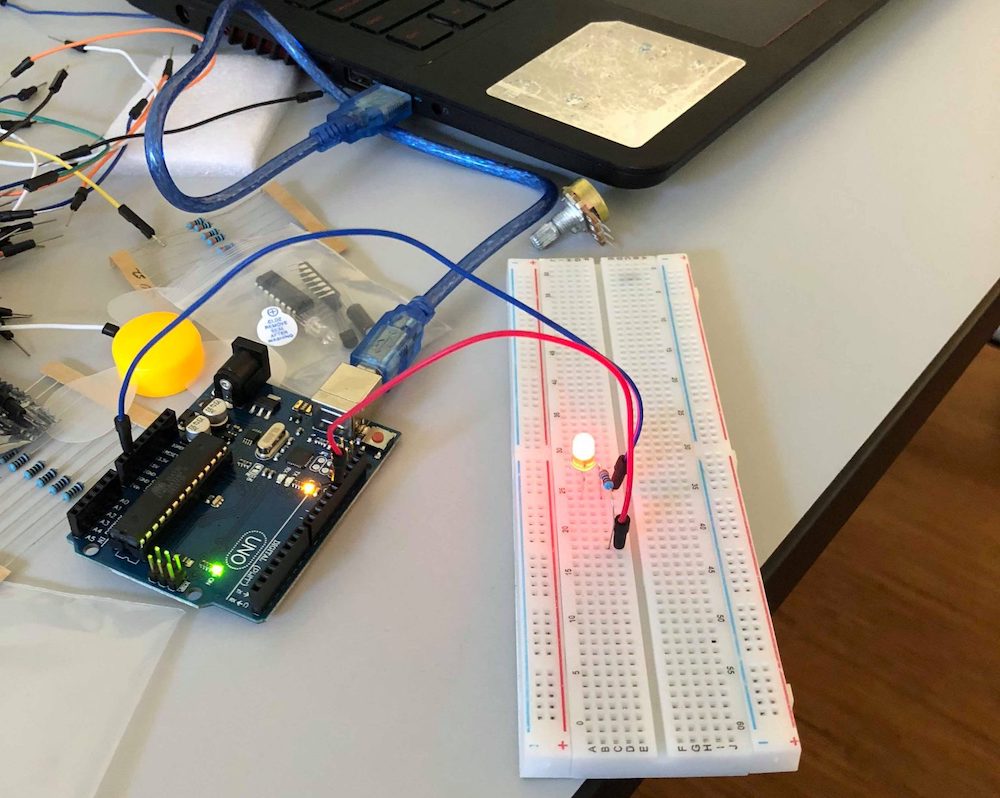Free Beeps
═══ TEAM MEMBERS ═══
Nate Tilton and Enrico Cruvinel.
═══ PROBLEM ═══
A wheelchair user often cannot see what is behind them – so they end up hitting walls, doors and sometimes even other people which can be very frustrating.
═══ OBJECTIVE ═══
Create a sensor to help users of power chairs, scooters, etc. when backing up.


A wheelchair user often cannot see what is behind them – so they end up hitting walls, doors and sometimes even other people which can be very frustrating.
The Free Beep is essentially a back up sensor for power chairs, scooters, etc. It could even be used for people that have Hyper-Arousal (like PTSD) as it has a vibrate mode as well.
With the Free Beeps Project in Fall 2018, URAPers Nate Tilton and Enrico Cruvinel created a durable and affordable solution for back up sensors using an Arduino, ultrasonic rangefinder, and transducer.
The prototype used a piezo buzzer to indicate distance (similar to a car’s backup alarm) but the team proposed a future iteration could use a servo motor or linear motor (such as the haptic feedback motors on cellphones) to give more discrete notification.
Note: Comments are held for review before publicly posted.
